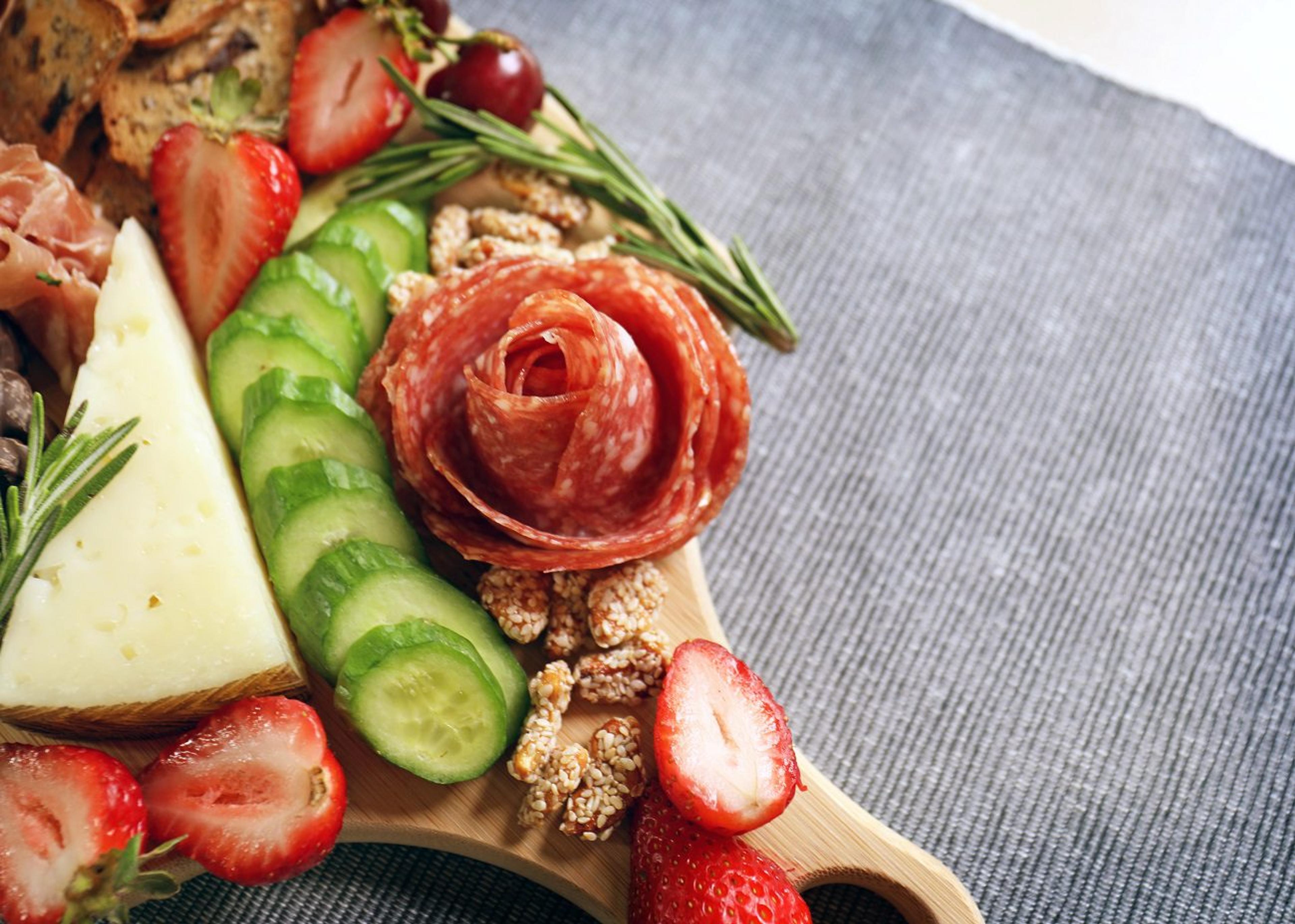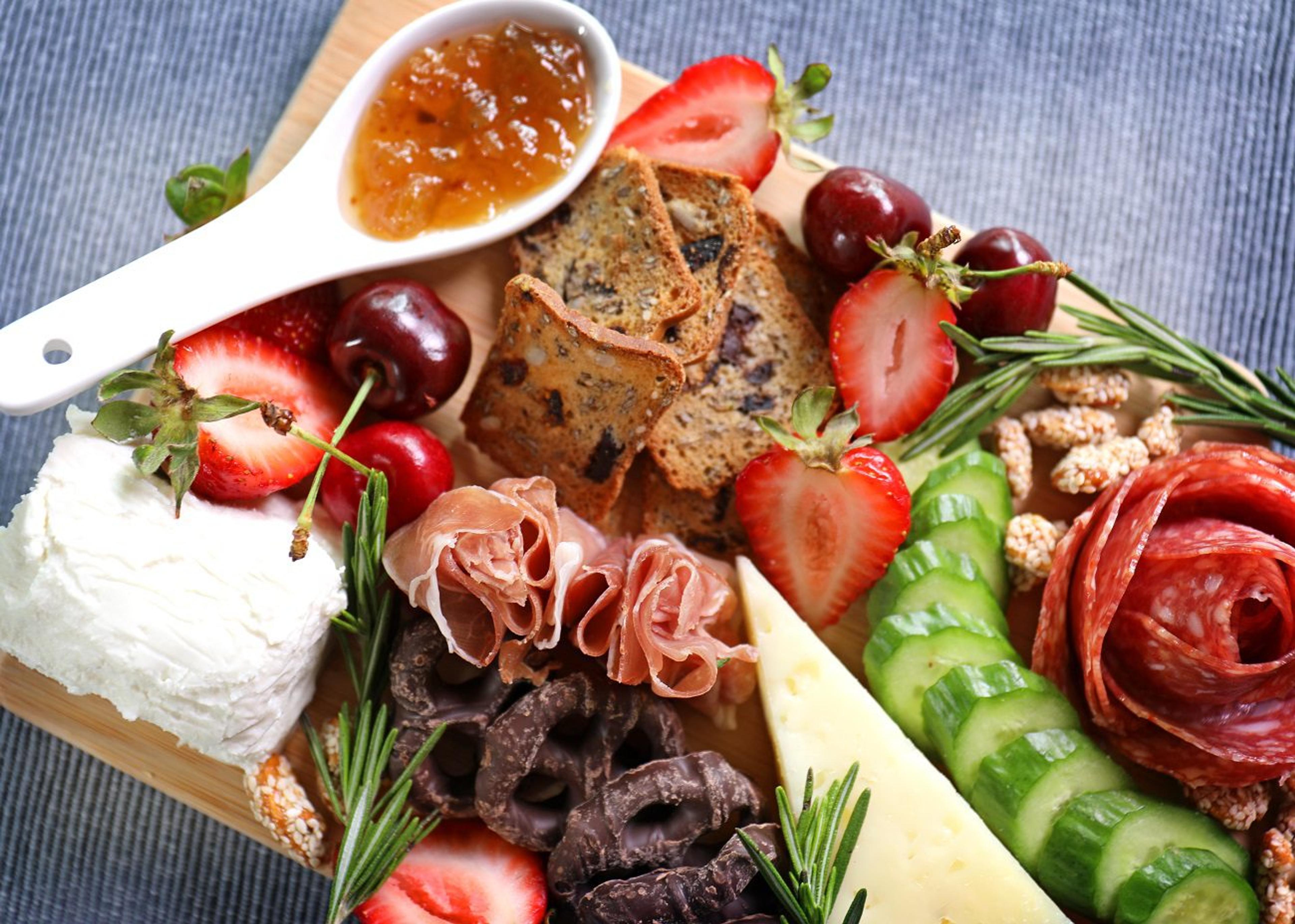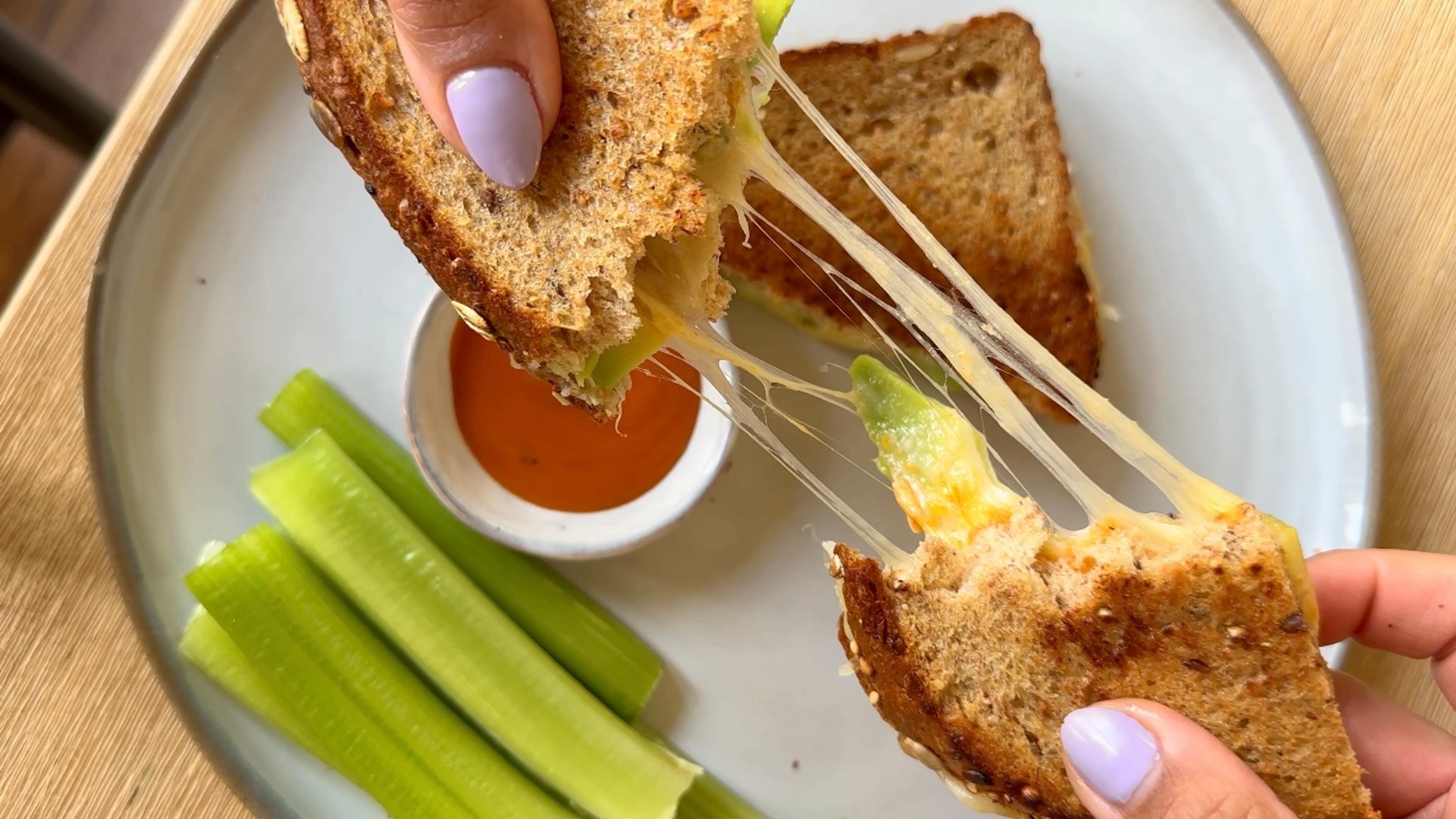5 Easy Tips for Styling a Charcuterie Board

Shanthi Appelo
| 3 min read

Charcuterie boards have become a modern-day entertaining staple, but their roots stem from 15th century France. Before the invention of electricity and refrigeration, they resorted to preservation methods using salt, vinegar and smoke to enjoy meat. The word charcuterie comes from two French words: “chair” meaning “flesh” and “cuit” which means “cooked.”
Though charcuterie sounds and looks fancy, it doesn’t have to be complicated. Follow these five simple tips for styling a beautiful display of cured meats, cheeses, fresh fruits and condiments:
Consider the details.
A wood or marble board is a good place to start in addition to small jars, bowls and small utensils to add dimension and keep the area neat and clean. Hummus, spreads, honey and other wet items, such as olives, are best kept in bowls.
Though charcuterie ingredients are visually pleasing as-is, salami roses are a great way to add a captivating detail to your board. Simply line the edge of a glass with the salami slices, then turn upside down and watch it bloom.
The best charcuterie boards are those that are easy for guests to enjoy. Consider pre-slicing the cheese and any other large ingredients, like fruits, to make them more accessible for guests.
Keep flavor elements and textures in mind.
A good board includes elements of sweet, salty and savory. A great way to hit all the flavor notes is through condiments like jams, relishes, honey and spreads.

Don’t forget to add a variety of textures – fresh veggies, crackers and nuts can bring crunch and color. Moreover, try to feature a cheese selection that varies from soft to hard in a variety of flavors. Goat cheese and Gournay-based Boursin cheese are great soft options, while parmesan, manchego, cheddar and asiago are harder cheeses to enjoy with jams or spreads on a cracker.
Don’t forget the role of fruits.
Fresh fruits add a burst of color and antioxidants to a cheese and meat-filled plate. Grapes, berries and melons slices are choices that pair well with most cheeses. A full charcuterie board without gaps makes for an impressive display. Fill in any gaps with fruits before sharing with guests.
Include local items.
Michigan is home to a wide array of high-quality charcuterie board ingredients. The summer offers fresh fruits at peak ripeness that pair nicely with meats and cheeses, including strawberries and cherries. Michigan’s wide variety of nectar sources make it a haven for bees with plenty of responsible farmers offering delicious honey. Not sure where to go? Consider a trip to the farmer’s market for a one-stop shop for locally sourced cheeses, fruits, condiments and more.

Keep the portions in mind.
Because charcuterie features cheeses, high-fat meats and spreads, smaller boards are a great way to control portions. For reference, the 10-inch board featured in the video contains 930 calories (59 grams of fat, 57 grams of carbohydrates and 45 grams of protein).
A charcuterie board doesn’t have to be complicated; the beauty of it is that you can make it your own with what you have.
More from A Healthier Michigan:
Photo credit: Blue Cross Blue Shield of Michigan





